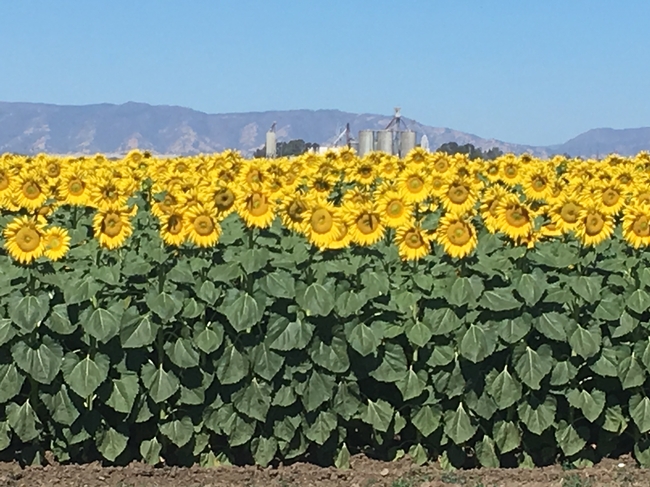UC Gardening Blogs
Valley Carpenter Bees: Drama in the Garden
Some folks call them "bumble bees," but they're not. In size, the female Valley carpenter bee...
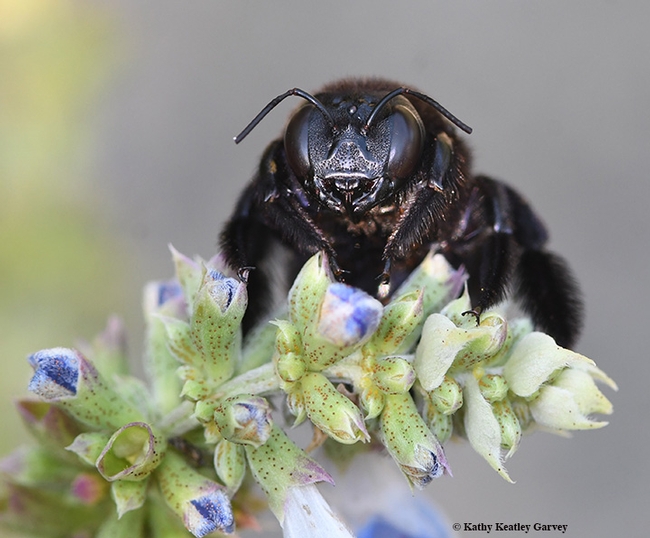
Don't bug me, I'm trying to wake up. This female Valley carpenter bee, Xylocopa varipuncta, peers over a blue spike salvia (Salvia uliginosa) blossom. (Photo by Kathy Keatley Garvey)
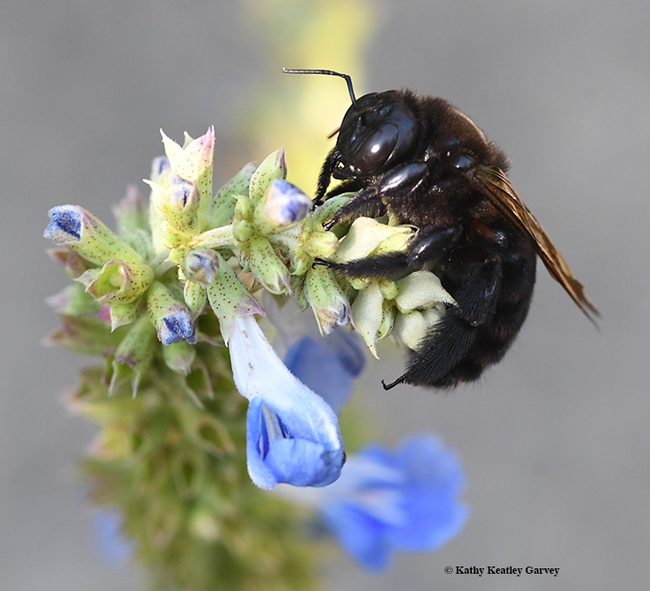
The female Valley carpenter bee sips nectar from a blue spike salvia, Salvia uliginosa. (Photo by Kathy Keatley Garvey)
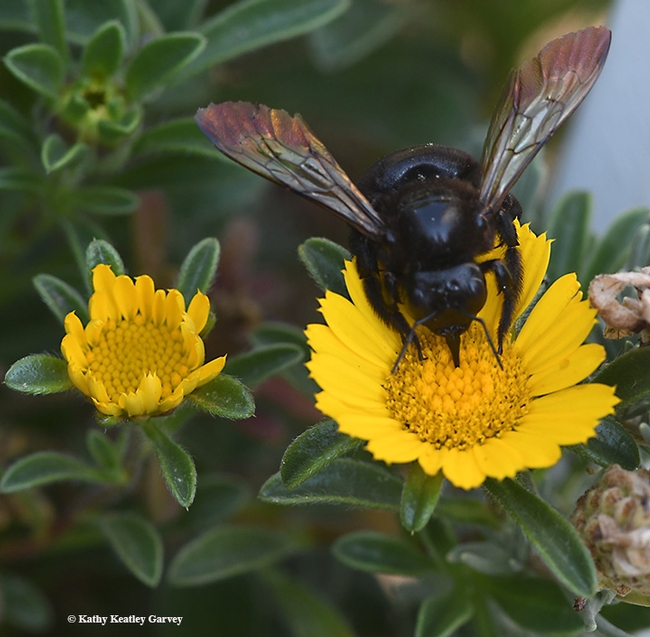
The metallic wings of the female Valley carpenter bee gleam in the sun as she sips nectar from gold coin, Asteriscus maritimus. (Photo by Kathy Keatley Garvey)
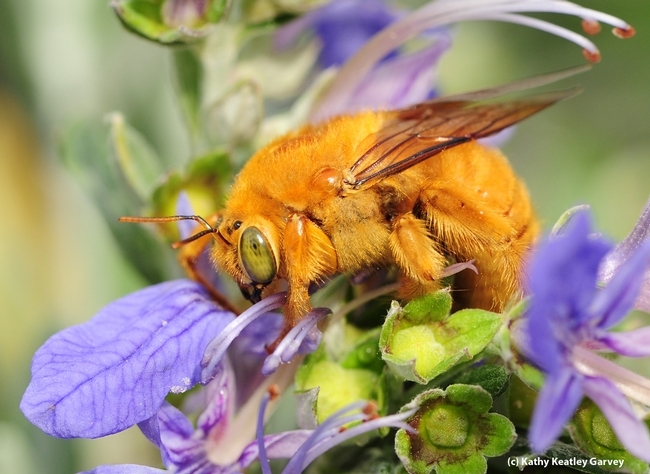
This is the male Valley carpenter, Xylocopa varipuncta, bee on germander. (Photo by Kathy Keatley Garvey)
The Predator and the Prey: Just Wing It!
Judge: "Will the defendant please rise?" The defendant, a praying mantis--a male Stragmomantis...
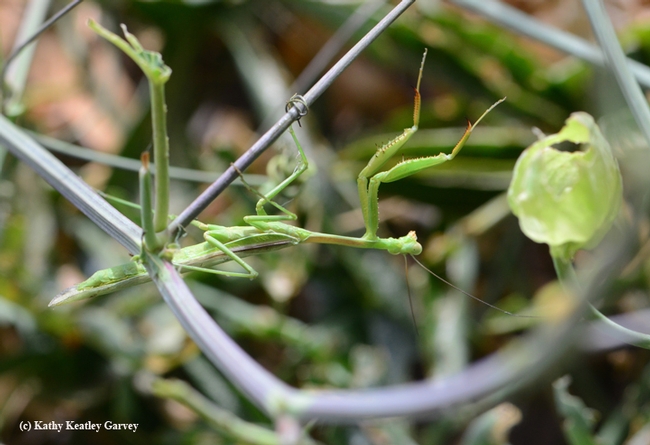
A male Stagmomomantis limbata, as identified by mantis expert Lohit Garikipati, a UC Davis student who rears mantids, stretches in the passionflower vine. (Photo by Kathy Keatley Garvey)
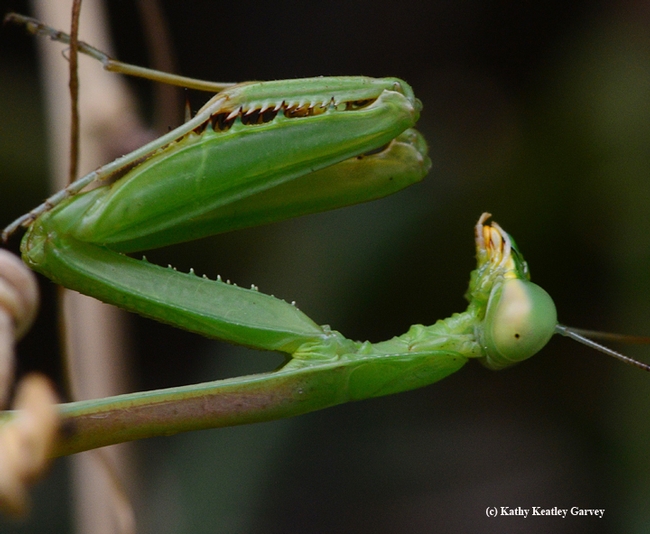
The male Stagmomomantis limbata lies in wait. (Photo by Kathy Keatley Garvey)
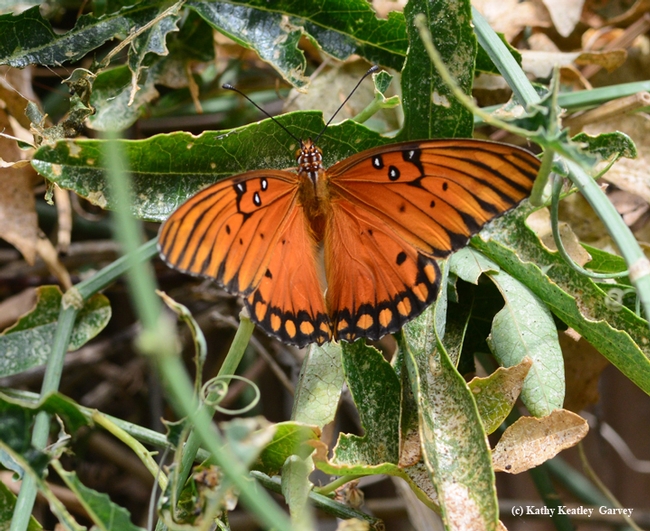
An intact Gulf Fritillary in the passionflower vine. (Photo by Kathy Keatley Garvey)
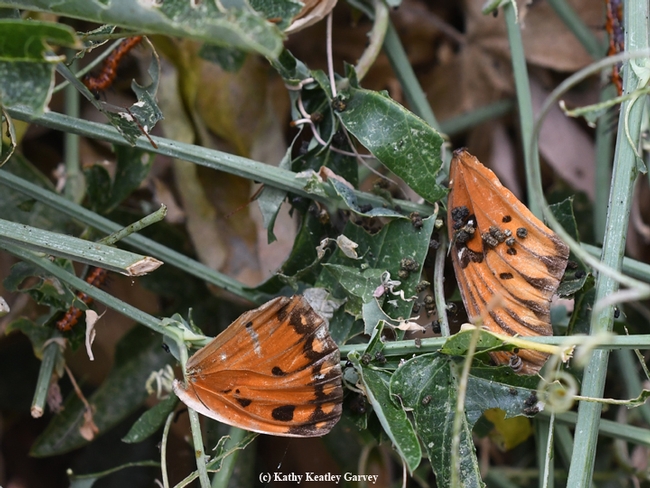
A not-so-intact Gulf Fritillary in the passionflower vine. (Photo by Kathy Keatley Garvey)
Ever Seen a Mantidfly?
Ever seen a mantidfly, also called a mantisfly? Bohart Museum of Entomology associate John De...
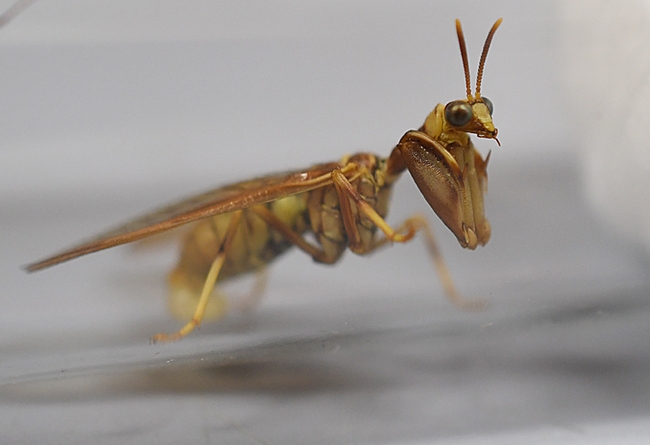
Mantidflies use their front legs to catch small insect prey. This one was collected by John De Benedictis at the UC Davis Stebbens Cold Canyon Reserve. (Snapshot by Kathy Keatley Garvey)
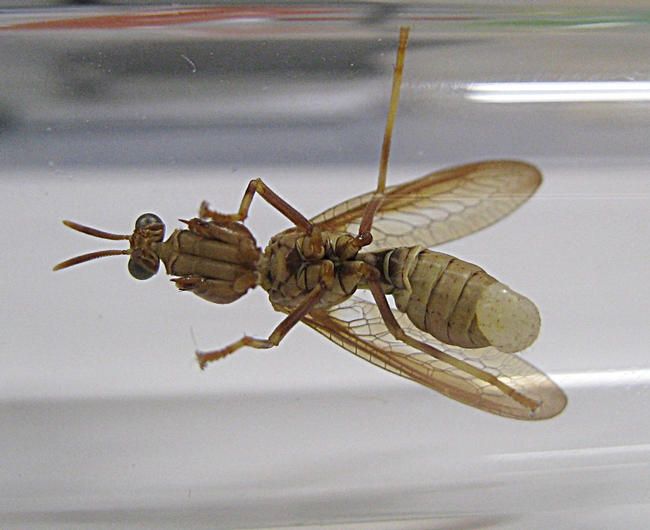
In coloring, the mantidfly abdomen resembles a paper wasp. (Photo by Kathy Keatley Garvey)
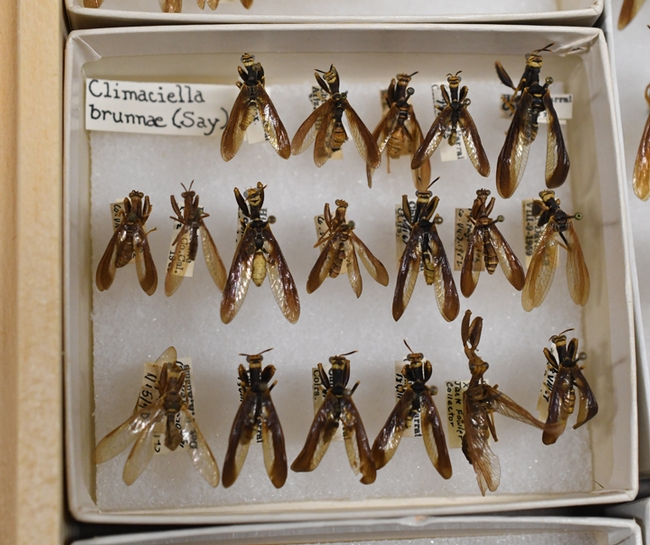
Part of the collection of mantidflies, Climaciella brunnea, at the Bohart Museum of Entomology. (Photo by Kathy Keatley Garvey)
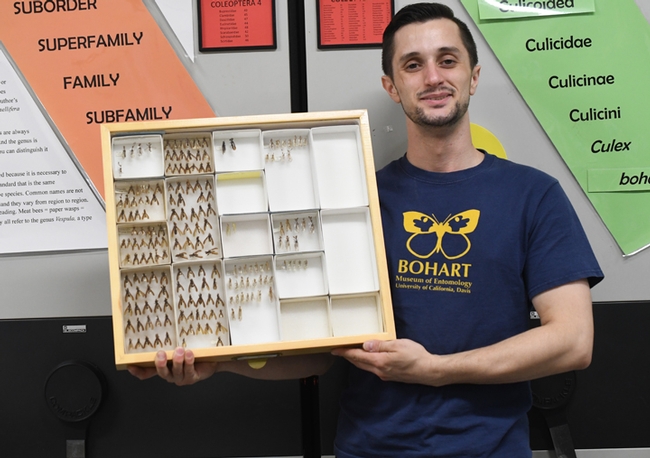
Bohart Museum of Entomology associate Wade Spencer holds a drawer of mantidfly specimens. The museum houses some eight million specimens, collected globally. (Photo by Kathy Keatley Garvey)
Sunflowers
A few evenings back, driving into town, I saw a young woman park her minivan next to a field of sunflowers. She and a little girl got out of their car and walked up to the flowers. The little girl was about the same height as the shorter stalked variety, while the woman was towered over by the taller type. I have passed the fields of sunflowers each summer in our area for many years. I have always enjoyed looking at the tournesols, as the French call them, translated “turns towards the sun”. While some think of Provence when seeing sunflowers, they actually originated in North America. Of approximately 70 varieties only 3 originated in South America.
Sunflowers were first cultivated by Native Americans. The seeds were pounded into flour for bread or cracked and eaten raw or crushed for oil. Other parts of the plant were used for body ointment, dyes, medicine, building material and ceremonial use. The Spanish explorers took the seed to Europe in the 1500's, and it has flourished there since. In the early 1700s, an Englishman devised a way to squeeze the oil from the seed on a larger scale basis. Russia became the largest grower in the 1800s. Today Ukraine is Number 1 and Russia Number 2 as the top growers in the world. The US has about 3 million acres planted with sunflowers and about 90% is of the type used for making sunflower oil. The seed pulp that is left after crushing and squeezing for the oil is used for livestock feed. Whole seeds are used for human snack food and for birdseed.
Something you may not know about sunflowers is that they were planted at Chernobyl and Fukushima after the radiation accidents at each place. A researcher from the University of Virginia, Catie Kitrinos has found that some (not all) sunflower varieties can remove toxins (lead, zinc, uranium) from the soil while growing, a process called phytoremediation. The plants are safely destroyed (not eaten) after they have matured. This process is much less costly in taking care of radioactive or heavy metal-laden soil.
Sunflowers grow quickly reaching their full height in about 120 days. Their roots can be 9 feet deep. In the fall, after they have dried on the stalk, the sunflower heads are harvested. The larger black seeds are typically used for oil, the striped ones for human snack food, and the smaller black seeds for birdseed. Birds don't actually care if seeds are striped or black and will eat what they find. Since each sunflower head can produce up to 1000 seeds, there should be plenty to share.
A B-Day Celebration for Robbin Thorp at the Bohart Museum of Entomology
It was "b-day" today at The Bohart Museum of Entomology in honor of longtime Bohart associate...
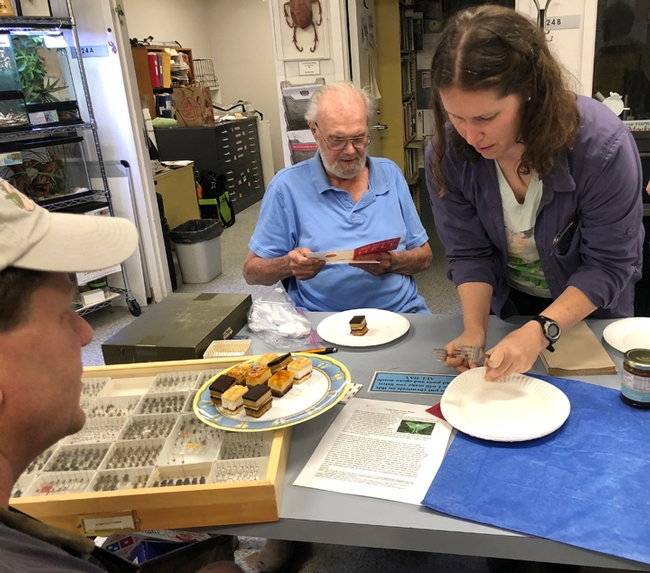
Tabatha Yang, education and outreach coordinator for the Bohart Museum of Entomology, serves dessert at Robbin Thorp's birthday celebration while the distinguished emeritus professor reads the birthday wishes. (Photo by Kathy Keatley Garvey)
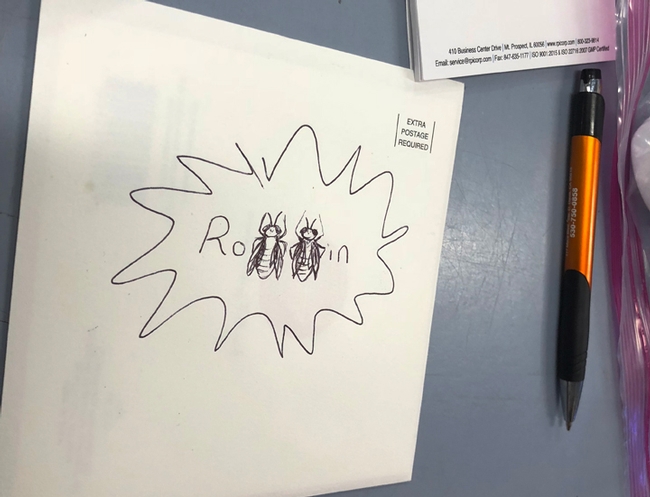
UC Davis doctoral student Charlotte Herbert Alberts created the longhorned bees on Robbin Thorp's card--putting bees in the "double b's of his name. (Photo by Kathy Keatley Garvey)
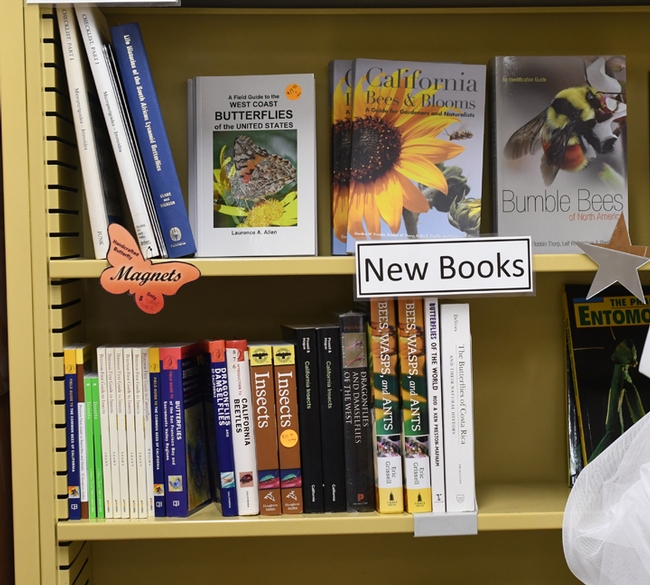
Robbin Thorp is the co-author of two books that line the gift shop of the Bohart Museum of Entomology: Bumble Bees of California: An Identification Guide (2014, Princeton University Press) and California Bees and Blooms: A Guide for Gardeners and Naturalists (2014, Heyday Books). (Photo by Kathy Keatley Garvey)




